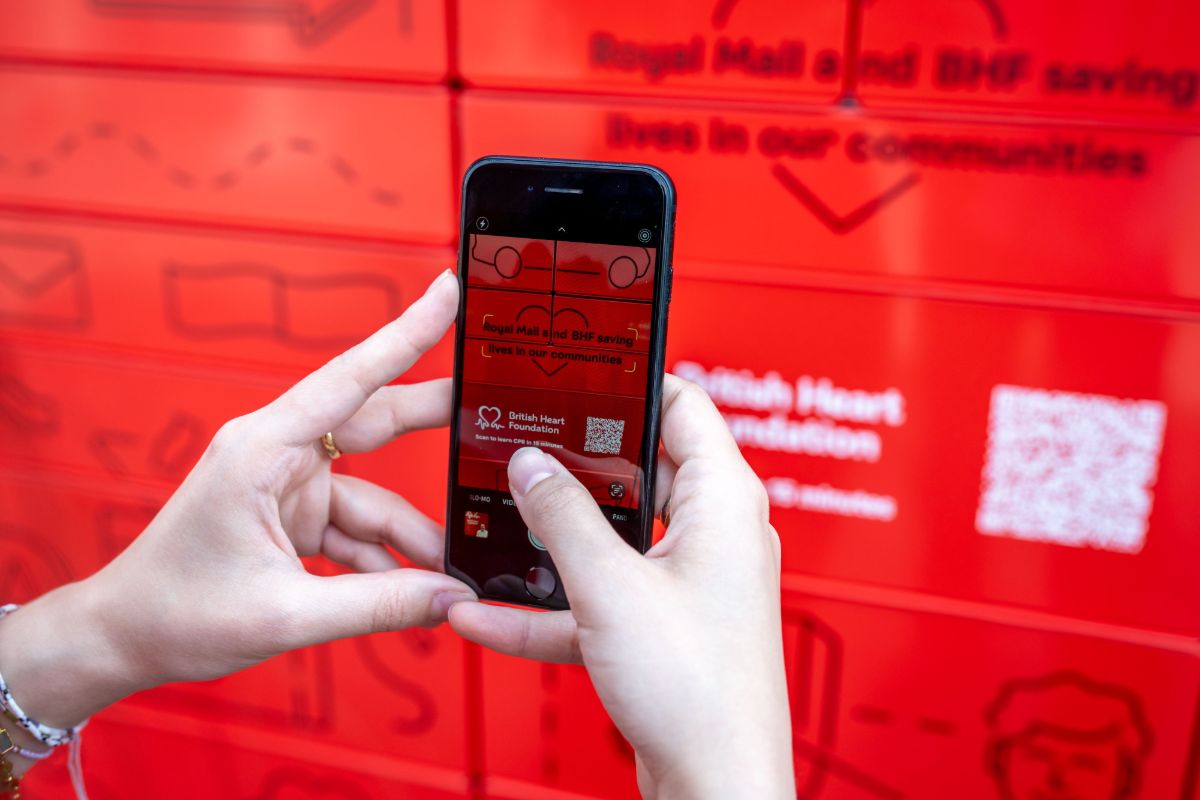Delivery services have been transformed in recent years as retailers work to offer increased convenience and flexibility. Sean Fleming, editor of InternetRetailing sister title eDelivery.net, offers a top-level view of a changing industry.
THE EXPLOSION OF new delivery and collection offerings now underway is like nothing the retail sector has experienced before: same-day delivery, lockers, doorstep boxes, collection and drop-off points, and of course click and collect are all becoming increasingly commonplace. Yet, just a few years ago, they simply didn’t exist.
The drive to offer customers greater convenience and flexibility is without doubt one of the biggest developments taking place in the industry. But there’s more to this than simply giving shoppers choice: bringing these options to fruition is going to need changes in attitude as well as changes in service.
THE SHIFT FROM ONE TO MANY
Consider the humble contact lens. A few years ago, contact lens wearers would pick up their new lenses from a high street optician. That doesn’t happen so often today. What was once a single shipment of 500 sets of contact lenses, delivered to the optician in one drop, is now 500 individual shipments.
The convenience of having lenses delivered straight to customers was a tremendous step forward in offering better service. But, thanks to the law of unintended consequences, this created more work on the delivery side of the equation.
When it’s just one example, one box of contact lenses, you could be forgiven for asking what the problem is. One answer is that we are starting to see a disconnect between the front end and the back end of retail. This is important because, while new services, promotions and gimmicks are the lifeblood of competitive retail businesses, such initiatives also leave retailers vulnerable if the fulfilment services and systems necessary to get items into shoppers’ hands aren’t robust enough to cope.
In the IRUK 500, brands such as Schuh are getting this right and stand out from the crowd thanks to fast collection from store within an hour, a range of delivery options and a 365-day returns window. House of Fraser , Boots and John Lewis also stand out for the wide choice they offer.
THE JOHN LEWIS EXPERIENCE
Famed for great service on both sides of the buy button, and a strong member of the Elite group in the IRUK 500, John Lewis is a business that invested heavily in cross-channel retail when the UK economy was faltering, and others in the industry retreated to more cautious positions. Being prepared for peaks in demand is part of what keeps it out in front.
“In the early days, when the online business was around £300 million in turnover, it was relatively easy,” says John Lewis’s head of operations, John Munnelly. “Back then, if you were 10% out [with forecasts] that just meant a few more packing stations. It’s a different story now. With an online business with turnover of more than £1 billion, a 10% variance to the forecast can be critical when scaling the number of pack benches for the D2C operation. The level of detail and the number of testing stages we go through are of the highest order to make sure we don’t get that part wrong.”
Ecommerce represents around 35% of John Lewis sales, a figure that’s equivalent to the sales generated by approximately 15 branches. Not only does that say much about the rate and scale of the growth of online sales, it hints at the efforts required to stay on top of deliveries.
“If we were a pureplay and all our orders were heading out to a carrier, when you look at the likes of Black Friday last year, when we saw something like 2.6 orders per second, that would start to be a problem,” Munnelly explains. “In the early days no one thought click and collect would take off. After all, why would people order something online and then go to a shop to collect it?”
“The thing about retail is, when it comes to carriers, we’re all sharing the same resources. In my opinion, the carrier network is the Achilles heel of the industry. It’s under-invested, yet customers still expect more for less. In terms of the value chain, that particular sponge is almost dry.”
There are finite limits to the number of vans, trucks and drivers available, to say nothing of the finite amount of road there is for them to drive along. But as more and more customers pick up their purchases from shops, some of that pressure will be alleviated.
John Munnelly adds: “We’re all going to have to think quite differently about the way we do things, because it’s not going to get any easier. It costs more to send a parcel to a customer than to put goods on the shelf in a store. The thing with Black Friday is that it’s never going away now, in my opinion, and we’ve all got to make sure the supply chain is joined up like never before, because you’re only as strong as the weakest link.”
SPREADING THE LOAD AND THE RISK
Click and collect will certainly take some of the pressures off the delivery sector. But, of the 1bn parcels expected to be sent out this year, in the region of 40m will be shipped to collection shops. That bottleneck isn’t going to be cleared just yet.
One of the more well-established parcel collection businesses is CollectPlus . Neil Ashworth, its chief executive, thinks greater collaboration, within retail businesses and between different parts of the industry, is becoming essential. He says companies have handled periods of peak demand in a ‘vertical’ way – I’m in my silo, you’re in your silo – and thinks a more collaborative, ‘horizontal’ approach is needed.
“Over the previous four years that we experienced Black Friday in this country, it generally just resulted in a bit of PR for Asda and Amazon , but last year saw everyone pitching in. That’s why I think there’s an obligation for this coming Christmas to be a more horizontal one,” he says.
Unless retailers’ marketing teams share their plans with everyone in the entire supply chain, weak links will be exposed. Those weak links are probably being relied on by others in the industry too. Staying in a silo isn’t enough anymore; even becoming a conscientious objector to Black Friday is no guarantee either.
“There were some really interesting outcomes from Black Friday,” Ashworth says. “Reiss didn’t do anything – no Black Friday promotions at all. Yet they saw a 30% uplift. Why? Because the customer is out there looking for a deal. There was a consequential effect not just down the supply chain but in parallel supply chains. “Retailers will have to think not only about how they will be affected by their own actions, but how the actions of others might affect them too.”
THE ARGOS APPROACH
Don’t go thinking a me-too attitude is enough in itself though. David Robinson is chief operating officer at Argos , the retailer that debuted the concept of click and collect. Its hub-and-spoke distribution network means it can now get more than 20,000 stock items into any store for collection.
“Customers have busy lives and technology has made it easier than ever for them to find what they want, when they want it, he says. The next logical step is getting it where, when and how they want it. Those retailers who appreciate that and do something about it are clearly going to be in a stronger position going forward.”
“That’s why we committed to finding innovative ways of bringing our product range to people, rather than simply expecting people to come to where we hold the stock. Will we be the only business doing that? No, of course not. But anyone following suit out of a desire to follow the herd isn’t guaranteed automatic success. Understanding your customers and listening to them has never been more important. If you don’t get that part right, the rest of it will be an uphill battle.”
PUTTING VALUE BACK INTO THE PROPOSITION
The delivery sector struggles with the issue of price vs cost. Shoppers want free – or low-cost – delivery, but they also want convenience and flexibility. The IRUK 500 found the median charge for standard delivery is just £3.99. Investing in the people, processes and technology required to give people a choice of delivery location, guaranteed delivery slots and in-flight change capabilities is a big ask when retailers are competing on price and cutting margins in order to win business.
Becky Clark is chief executive of NetDespatch . The company’s order and shipping systems help to power business such as CollectPlus and Amazon’s same-day delivery service, Pass My Parcel. She thinks it’s time the first mile and the last mile were better connected.
“It’s all on the retailer, I’m afraid,” she says. “There’s precious little the carrier can do. They only carry the parcels the retailer sends out, and the twin peaks of Black Friday and Christmas are painful.”
Clark adds: “You strike a deal with your carrier based on certain criteria, then you have a big promotion that goes really well and things can become unexpectedly expensive for them. The sooner the carrier knows, the greater the chance of avoiding problems. The more integrated your systems are, the more visible your problems will become. The sooner you can see them, the better equipped you will be to do something about them.”
There are many voices in the sector calling for something to be done to inject value back into the delivery service. Getting customers to start paying for things that have been free might seem counterintuitive, but Paddy Earnshaw, chief marketing officer of Doddle , thinks the picture is not as black as it has been painted.
“Propositions offered to customers will have to be driven by innovative solutions from the carriers and by the retailers, and from the likes of ourselves,” he says. “Customers are ordering later in the day, cut-offs moving later and later. If you move that forward to the fulfilment element, it’s really difficult to offer great customer service and customer choice when you know there’ll be failed deliveries time and again.
“You only need to look at the build up to Christmas, how people are desperate to get stuff in shorter time periods by ordering later and later: not only days towards the Christmas period, but also hours towards the December cut off. If there isn’t choice, customers will vote with their feet in our view.
“Interestingly, we’re also seeing that people aren’t afraid of paying for a service. Immediacy has a value – and that value is quite interesting to all of us in this sector. But it’s also quite interesting to consumers who are really desperate to get hold of the stuff.”
“It’s unlikely that the future health of the industry will be found by just hoping enough customers will be weaned away from the cheaper end of delivery options”
TRANSPARENTLY OBVIOUS
In a world where free next-day delivery helped propel growth but also laid the foundations for problems, it’s interesting to see there are business carving out viable niches – whether that’s Doddle, or CollectPlus, or any one of the locker box providers, from InPost to Pelipod.
It’s even more encouraging that Doddle is seeing customers willing to pay for an enhanced and convenient collection service. Although whether the company has identified a mass market trend or tapped into the needs, and wallets, of the time-poor and cash-rich is harder to say.
Either way, it’s unlikely that the future health of the industry will be found by just hoping enough customers will eventually be weaned away from the cheaper end of options. Similarly, it won’t be enough for retailers simply to throw new delivery and collections choices at customers in the hope that shoppers will respond positively.
Coping with peaks is part of providing customers with more, and better, year-round options. Trying to move forward without committing to greater transparency is unlikely to work – whether in relation to data, or stock levels, or when it comes to sharing vital information about promotions and volumes with carriers. Retailers need to be agile before the dam breaks, not when caught in a flood.
What matters to customers is the way, and extent to which, the promises made to them while they’re shopping are borne out when it comes to the collection and delivery of their purchases. That means retailers extending not just reach but brand equity and promises to the furthest reaches of the supply chain.





